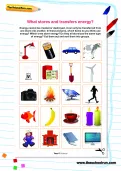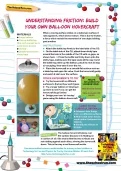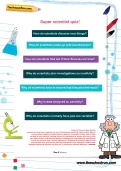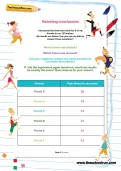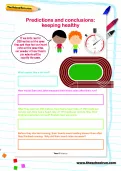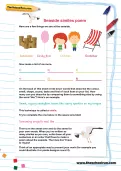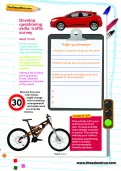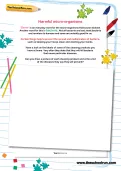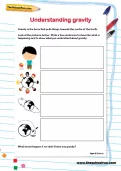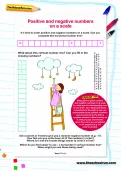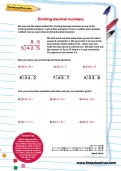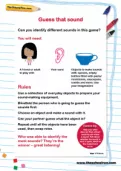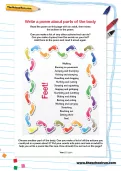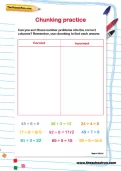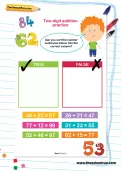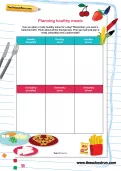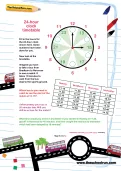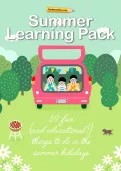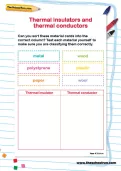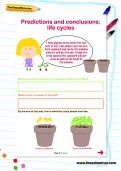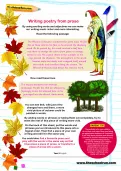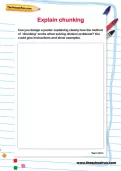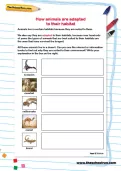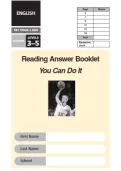A worksheet with predictions for an experiment into heart rates to test children on their investigative skills.
or
Register to add to your saved resources
A worksheet to encourage children to generate similes and then organise them into a poem.
or
Register to add to your saved resources
A worksheet to prompt children to carry out their own traffic survey and consider the answers collected.
or
Register to add to your saved resources
This download prompts your child to think about the harmful micro-organisms that are killed by cleaning products.
or
Register to add to your saved resources
This worksheet encourages children to look at pictures and then express their understanding of gravity. There is an answer sheet to follow.
or
Register to add to your saved resources
Already a subscriber? to view this content.
Use this worksheet to help your child practise positive and negative numbers on a horizontal and vertical number line.
or
Register to add to your saved resources
Already a subscriber? to view this content.
Worksheet demonstrating a simple method to work out how to divide decimals by one-digit numbers. Answers are provided.
or
Register to add to your saved resources
Already a subscriber? to view this content.
In this entertaining activity your child will learn all about sounds.
or
Register to add to your saved resources
This English worksheet will help to develop your child's skills of reading and understanding poetry. It encourages creativity and will help your child write in an imaginative and poetic way.
or
Register to add to your saved resources
A worksheet to encourage your child to use their knowledge of chunking when dividing in order to work out whether a number sentence is correct or not.
or
Register to add to your saved resources
Already a subscriber? to view this content.
An activity involving adding two-digit numbers in order to determine whether a number sentence is correct.
or
Register to add to your saved resources
Already a subscriber? to view this content.
Encourage your child to plan three healthy meals and then to do the opposite and plan three unhealthy meals.
or
Register to add to your saved resources
Already a subscriber? to view this content.
This worksheet helps children practise using the 24-hour clock and interpreting timetables.
or
Register to add to your saved resources
Already a subscriber? to view this content.
A long, lazy summer holiday is one of the great joys of life – but within days you’ll be driven to distraction by sibling squabbles and cries of “I’m bored” (not to mention a visible emptying of your wallet). Plus, research shows that kids who don’t stay mentally alert during the summer lose up to a third of what they’ve learned during the academic year. So try one of our 59 easy, boredom-busting activities – at home, on the move and on holiday. They’ll be having so much fun they won’t even realise they’re learning…
or
Register to add to your saved resources
Already a subscriber? to view this content.
A worksheet for children to cut out the names of different materials and then put them into the columns 'thermal insulator' and 'thermal conductor'.
or
Register to add to your saved resources
A worksheet showing the predictions and conclusions of an experiment into life cycles. Includes questions to encourage children to use their investigative skills.
or
Register to add to your saved resources
Already a subscriber? to view this content.
This worksheet encourages children to look at a piece of prose and improve it with their own phrases, before transforming the prose into a poem.
or
Register to add to your saved resources
Already a subscriber? to view this content.
Encourage your child to revise their knowledge of the chunking method by designing a poster to explain it. Can they think of some examples to illustrate this technique?
or
Register to add to your saved resources
Already a subscriber? to view this content.
This worksheet encourages children to think about animals in the desert and research how they are adapted to life in that habitat.
or
Register to add to your saved resources
Already a subscriber? to view this content.
Download and print this complete set of English SATs papers from 2004 to assist your child in preparing for the KS2 tests with some at-home revision and practice.
or
Register to add to your saved resources
